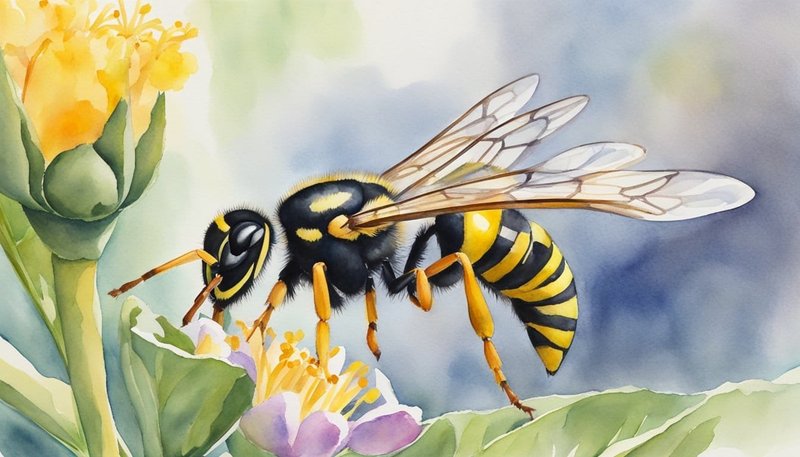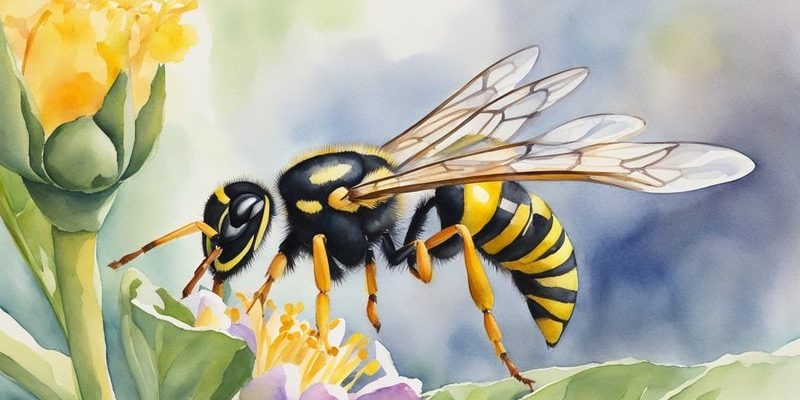
Paper wasps are fascinating creatures. They’re often seen gliding through the air, sipping nectar or darting to and from their nests. Imagine them as nature’s little architects, crafting intricate homes out of paper-like material. This unique ability isn’t just a neat trick; it plays a crucial role in their survival and that of other species around them. In this article, we’ll explore how these wasps fit into the big picture of ecology, including their roles as pollinators, predators, and even contributors to biodiversity.
Understanding Paper Wasps: Who Are They?
Before diving deep into their ecological roles, let’s get familiar with what paper wasps are. They belong to the family Vespidae, which is a group of social wasps. You might recognize them for their distinctive nests, which are often found hanging from tree branches, under eaves, or in sheltered areas.
Paper wasps are characterized by their long legs, slender bodies, and usually yellow or brown coloration. But what sets them apart is their nesting behavior. They create nests using a mixture of plant fibers and saliva, forming a paper-like structure. This is where the name “paper wasp” comes from! They’re not aggressive unless threatened, making them somewhat misunderstood.
So, what do these wasps eat? They primarily feed on nectar, but they also hunt for insects to feed their larvae. You might say they have a diverse palate, helping them thrive in various environments. Understanding their lifestyle gives us a clearer view of their impact on ecosystems.
The Role of Paper Wasps as Pollinators
You might be surprised to hear that paper wasps are important pollinators. While they’re not as famous for this role as bees, they definitely contribute. When paper wasps visit flowers to sip nectar, they inadvertently transfer pollen from one bloom to another. This process is crucial for the reproduction of many plants.
Think of it this way: every flower they visit can produce seeds and fruit, which can lead to more plants. This not only supports plant diversity but also food sources for other animals. Without pollinators like paper wasps, many plants wouldn’t be able to reproduce, which would disrupt food chains and ecosystems.
Also, their activity encourages plant growth, creating habitats for a variety of other species. Healthy plants mean healthy ecosystems, proving that even the smallest creatures can have a big impact.
Paper Wasps as Predators: Nature’s Pest Control
On the flip side, paper wasps are also effective predators. They hunt and feed on soft-bodied insects, such as caterpillars and aphids. By keeping these populations in check, they help maintain a balance in the food web. If left unchecked, pest populations can explode, leading to overconsumption of plants and disruption in local ecosystems.
You might wonder how they capture their prey. Paper wasps sting their victims to paralyze them before bringing them back to the nest. This not only feeds their larvae but also helps protect plants from potential pests. It’s like having a built-in pest control service in your backyard!
When you consider how much damage a few caterpillars can cause to a garden, the role of paper wasps as natural predators becomes clear. They help reduce the need for chemical pesticides, making them allies for gardeners and farmers alike.
Supporting Biodiversity through Nesting Habits
The nests of paper wasps are more than just homes; they’re vital for supporting biodiversity. These nests can provide shelter for various creatures, from spiders to other insects. When the wasps are done with a nest, it often becomes a habitat for other organisms.
Moreover, paper wasps themselves are an integral part of the food web. Birds and mammals, such as raccoons and skunks, are known to feed on them. The presence of paper wasps in an ecosystem can indicate a healthy environment, as they thrive in diverse settings.
Using their nests to foster new life reflects the interconnectedness of nature. Every species has a role, and paper wasps contribute to this intricate web of life by providing shelter and sustenance to others.
The Impact of Paper Wasps on Ecosystem Health
So, why do all these roles matter? Ecosystem health relies on balance. Every creature, including the often-overlooked paper wasp, contributes to this balance. A decline in their population could lead to a rise in pest insects, reduced plant growth, and ultimately changes in the habitats of many other species.
Healthy ecosystems are more resilient to changes, whether from climate fluctuations, habitat loss, or invasive species. The paper wasp plays a subtle yet significant part in this resilience. Their roles as pollinators, predators, and contributors to biodiversity show that maintaining a diverse range of species is essential for overall ecosystem health.
As we look to protect our environments, recognizing the importance of all species, even the less popular ones, becomes vital.
Challenges Faced by Paper Wasps
Like many creatures, paper wasps face threats that impact their populations. Habitat loss due to urbanization and agricultural development can reduce their nesting sites and food sources. Pesticides used in gardening and farming can also harm them, impacting their populations and, consequently, their ecological roles.
Climate change poses an additional threat, altering their habitats and food availability. Changes in weather patterns can affect the timing of blooming plants, disrupting their critical role as pollinators.
Conservation efforts aimed at promoting biodiversity can help support paper wasp populations. Simple actions like preserving native plants in your garden can attract these wasps, allowing them to thrive.
How We Can Help Paper Wasps
If you’re intrigued by the role of paper wasps and want to support them, here are some simple steps you can take:
- Plant native flowers: These attract paper wasps and provide essential food sources.
- Avoid pesticides: Limit your use of chemicals that can harm these beneficial insects.
- Provide shelter: Allow natural spaces in your garden, like fallen logs and leaves, where they can nest.
- Educate others: Share what you know about the importance of paper wasps in ecosystems.
By making these small changes, you can help maintain the delicate balance of nature and support these essential creatures.
In conclusion, the role of the paper wasp in ecosystems is multifaceted and vital. They’re not just stinging insects to be feared; they are crucial players in maintaining the health and balance of our environment. Understanding their contributions can help us appreciate these creatures more and advocate for their protection. So, the next time you see a paper wasp buzzing about, remember they are working hard behind the scenes to support our ecosystems!

